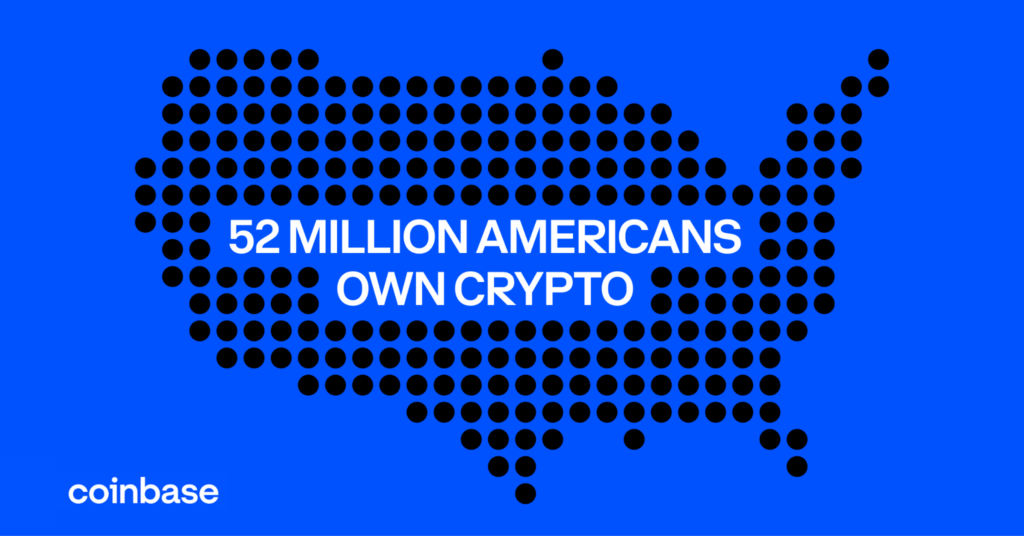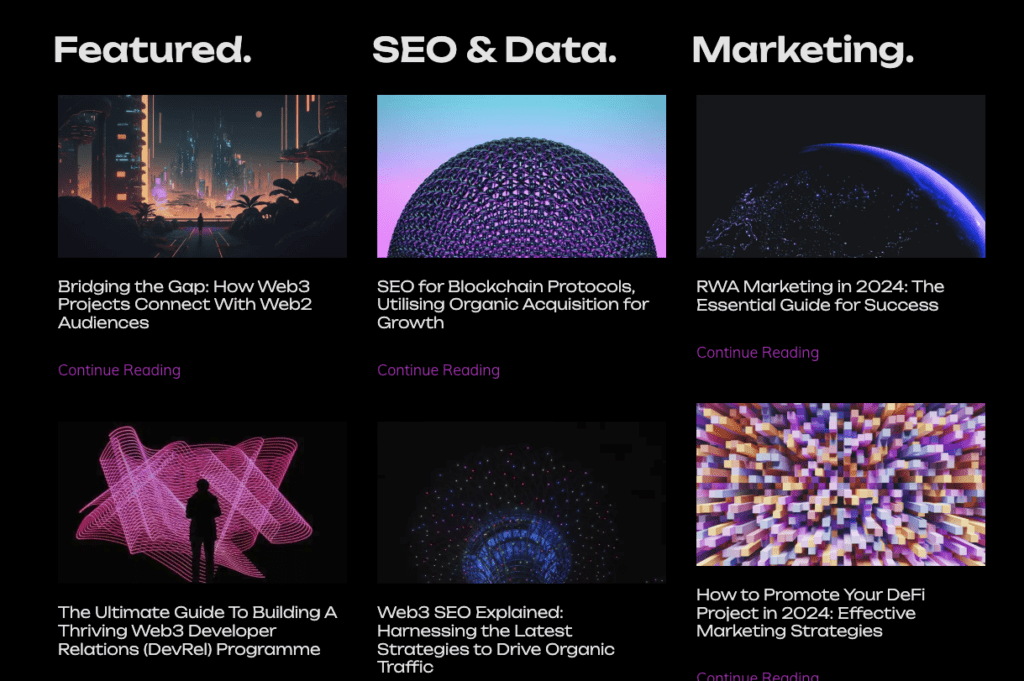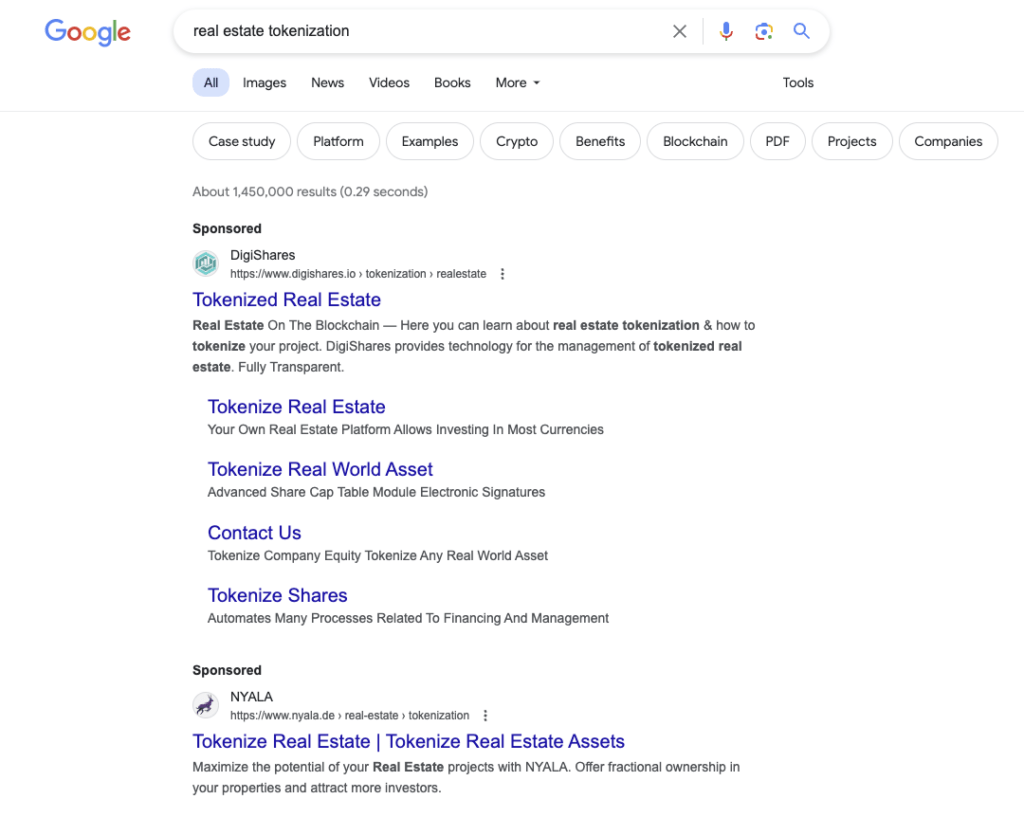
For web3, crypto and blockchain protocols – marketing is an essential element and part of your project’s lifecycle. From generate awareness to your token, or driving TVL on your blockchain, marketing matters.
As such, in this article we’ll explore the types of marketing available to web3 and crypto projects and how your project and/or protocol can utilise them and maximise their effectiveness.
To help with your marketing efforts, here are some of the most frequently utilised and effective types of marketing in the web3 space. In this article we will cover 24 types of marketing available to crypto and web3 projects, including:
- B2B & Enterprise Marketing
- B2C Marketing
- Inbound Marketing
- Outbound Marketing
- Digital Marketing
- Search Engine Marketing (SEM)
- Content Marketing
- Social Media Marketing
- Influencer & KOL Marketing
- Email Marketing
- Video Marketing
- Viral Marketing
- Product Marketing
- Brand Marketing
- Offline Marketing
- Advocacy Marketing
- Direct Marketing
- Print Marketing
- Event Marketing
- Integrated Marketing
- Community Marketing
- Developer Marketing
- Ecosystem Marketing
- Airdrop & Point System Marketing
B2B / Enterprise Marketing: Building Business Relationships

B2B / Enterprise marketing focuses on adoption of your products or services to enterprises or other protocols. For Web3 and crypto projects, this involves creating strategic partnerships and promoting your solutions and their capabilities to enterprises and protocols.
Best Practices:
- Value Proposition: Clearly define and communicate your project’s value to businesses and utility to potential partners and protocols.
- Networking: Attend industry and web2 events in your given target space and engage in networking to build relationships.
- Content Marketing: Develop high-quality content that addresses an enterprises or protocols pain points.
- Consider Account-based Marketing: For high-value users, or protocols, establishing ABM can help to grow and fosters relations with your core end users.
- Utilise Demos & Sample Data: Via demos, or sample data, you can build a set of interested users capturing data and entering them into a sales pipeline.
Potential Tools:
- CRM Systems: Salesforce or HubSpot for managing business relationships.
- Email Marketing: Mailchimp, HubSpot or ActiveCampaign for targeted email campaigns.
- LinkedIn: LinkedIn Sales Navigator for networking and lead generation.
Examples:
- Case Studies: Publishing case studies that showcase successful B2B partnerships and Enterprise adoption.
- Whitepapers: Creating whitepapers that detail the technical benefits of your project.
- Webinars: Hosting webinars to educate businesses about blockchain technology.
B2C Marketing: Engaging the Masses

B2C marketing targets individual consumers and users. For crypto projects, this means creating campaigns that appeal to retail investors and end-users alike. Whether your project is a game, has a token, or is DEX, driving users, traders and engagement should be at the core of your marketing focus.
Best Practices:
- User Education: Educate consumers about your technology or project and its benefits.
- Social Proof: Use testimonials and reviews to build trust, trust and value are crucial in web3.
- Loyalty Programs: Implement loyalty programs to retain users, provide early access and incentive them.
Potential Tools:
- Social Media Platforms: Facebook, Twitter, and Instagram for reaching new consumers.
- SEM: Build awareness and capture users showing interest in your, or similar products.
- Analytics Tools: Google Analytics for tracking consumer behaviour.
- Email Marketing: Constant Contact or Mailchimp for consumer-focused campaigns.
Examples:
- Tutorials: Creating video tutorials that explain how to use your platform.
- Influencer Partnerships: Collaborating with influencers & KOLs to reach a broader audience.
- Promotional Campaigns: Running promotions and incentives to attract new users.
Inbound Marketing: Attracting with Content

Inbound marketing attracts customers through valuable content and experiences. This means creating educational and engaging content that draws in users, given the complexities within the space, providing useful and educational content is a strong pull tactic to earn users.
Best Practices:
- SEO Optimisation: Optimise your content for search engines to increase visibility. (Read more about web3 SEO & Crypto SEO)
- Content Creation: Regularly publish blog posts, articles, and videos.
- Lead Magnets: Use lead magnets like eBooks or webinars to capture user information.
- Research: Use tactics such as keyword research, audience research and competitor analysis to inform your content.
Potential Tools:
- Content Management Systems: WordPress or Ghost for managing content.
- SEO Tools: Ahrefs or SEMrush for research and optimising content.
- Analytics Tools: Google Analytics, Search Console and others for tracking content performance.
Examples:
- Blog Posts: Writing in-depth blog posts on blockchain technology.
- Newsletters: Sending regular newsletters with industry news and products updates.
Outbound Marketing: Reaching Out Proactively

Outbound marketing involves actively reaching out to potential customers. For crypto projects, this could mean display or paid advertising, cold emailing, or direct mail. Prospective marketing can be costly, though can help a project reach new new users.
Best Practices:
- Targeted Campaigns: Target your campaigns to specific audiences.
- Clear Messaging: Ensure your messaging and creative is clear and compelling.
- Follow-Up: Implement follow-up strategies to maintain engagement, create and optimise sequences.
Potential Tools:
- Email Platforms: Mailchimp, HubSpot or Constant Contact for email campaigns.
- Advertising Platforms: Web3 or Web2 Ad platforms depending on your users
- CRM Systems: Salesforce or HubSpot for managing outreach efforts.
Examples:
- Cold Emails: Sending personalised emails to potential investors.
- Paid Ads: Running targeted ads and ads on social media platforms.
- Direct Mail: Sending informational brochures to potential business partners.
Digital Marketing: Leveraging Online Channels

Digital marketing encompasses all marketing efforts using the internet and digital channels to reach relevant audiences at scale. This means utilising a variety of online and decentralised channels to reach and convert your audience.
Best Practices:
- Multichannel Approach: Use multiple online channels to reach your audience.
- Analytics: Track and analyse your digital marketing efforts.
- Engagement: Engage with your audience regularly through various platforms.
Potential Tools:
- Social Media Management: Hootsuite, Typefully or Buffer for managing social media accounts.
- Analytics Platforms: Google Analytics, Simple Analytics and cookieless tracking, or Adobe Analytics for tracking performance.
- Advertising Platforms: Google Ads, Brave, Addressable, Slise, Coinzilla, etc. (Read more about web3 ad networks here.)
- Examples:
- Social Media Campaigns: Running campaigns across multiple social media platforms.
- Email Newsletters: Sending out regular email newsletters with updates and news.
- SEO: Optimising your website and content for search engines.
- Programmatic Ads: Appearing to users browsing websites in related verticals and topics
Search Engine Marketing (SEM): Boosting Visibility

SEM involves using paid advertising to increase visibility on search engines. For Web3 projects, this can help attract users actively searching for crypto-related information. While there can be regulatory issues, SEM is an effective way to reach new users.
Best Practices:
- Keyword Research: Conduct thorough keyword research to target the right terms.
- Ad Copy: Write compelling ad copy to attract clicks and drive CTR %
- Landing Pages: Optimise landing pages to increase conversions, considering A/B testing to build learnings and insights.
Potential Tools:
- Ad Platforms: Google Ads, Brave, etc. for running SEM campaigns.
- Keyword Tools: Ahrefs or SEMrush for keyword research.
- Analytics Tools: Google Analytics and Google AdWords for tracking ad performance.
Examples:
- Google Ads: Running ads targeting keywords like “tokenised real estate”
- Display Ads: Using display ads to reach a broader audience.
- Retargeting: Implementing retargeting campaigns to bring back visitors who have interacted with your website.
Content Marketing: Providing Value through Content

Content marketing focuses on creating and distributing valuable content. Projects and protocols can use this to help educate and engage your audience. Engaging content such as calculators and tools can be utilised via shareable content, growing your audience.
Best Practices:
- Educational Content: Create content that educates your audience.
- Regular Updates: Publish content regularly to keep your audience engaged.
- Visuals: Use visuals like infographics and videos to make content more engaging.
Potential Tools:
- Content Management Systems: WordPress or Ghost for managing content.
- SEO Tools: Ahrefs or SEMrush for optimising content.
- Analytics Tools: Google Analytics for tracking content performance.
Examples:
- Blog Posts: Writing detailed blog posts on blockchain topics.
- Infographics: Creating infographics to explain complex concepts.
- Videos: Producing videos that showcase your project’s benefits.
Social Media Marketing: Engaging with Audiences
Social media marketing uses social platforms to promote your project. Web3 projects can build a presence on platforms where your audience spends time. With the growing DeSo scene and influence from X, social is at the heart of most web3 projects marketing mix.
Best Practices:
- Engagement: Regularly engage with your audience through posts and comments.
- Content Variety: Use a mix of content types like text, images, and videos.
- Analytics: Track and analyse your social media performance.
Potential Tools:
- Social Media Management: Hootsuite or Buffer for managing social media accounts.
- Content Creation: Canva or Adobe Spark for creating visuals.
- Analytics Tools: Sprout Social or Hootsuite Analytics for tracking performance.
Examples:
- Twitter Threads: Creating informative Twitter threads on blockchain developments.
- Instagram Stories: Sharing behind-the-scenes content on Instagram.
- Reddit Communities: Engaging with members in Reddit groups focused on crypto and web3, and your brand.
Influencer Marketing: Harnessing Trusted Voices
Influencer marketing involves partnering with influencers to promote your project. Whether this is at pre-TGE for your project and KOL rounds, or to promote an upcoming launch or campaign – influencers are a powerful means to bring new eyes and users to your project.
Best Practices:
- Relevant Influencers: Partner with influencers relevant to the web3, or associated space for your project.
- Authenticity: Ensure influencer endorsements are genuine and authentic.
- Metrics: Track the performance of influencer campaigns across socials, campaigns and traffic.
Potential Tools:
- Influencer Platforms: Upfluence or AspireIQ for finding and managing influencers.
- Social Media: Platforms like Instagram and Twitter for influencer partnerships.
- Analytics Tools: Google Analytics, and Typefully for tracking campaign performance.
Examples:
- YouTube Reviews: Partnering with crypto YouTubers to review your project.
- Twitter Endorsements: Getting influencers to tweet about your latest developments.
Email Marketing: Nurturing Relationships

Email marketing involves sending emails to communicate directly with your audience. CRM and email is a powerful tool for updates, announcements, engagements and newsletters.
While you’re here, consider subscribing to the ColdChain Web3 Marketing Newsletter.
Best Practices:
- Segmentation: Segment your email list to send targeted messages.
- Personalisation: Personalise emails to increase engagement and open rates.
- Automation: Use automation to streamline and optimise email campaigns.
Potential Tools:
- Email Platforms: Mailchimp, HubSpot or Constant Contact for email campaigns.
- Automation Tools: ActiveCampaign or Drip for email automation.
- Analytics Tools: Litmus or MailerLite for tracking email performance.
Examples:
- Newsletters: Sending regular newsletters with project updates and news.
- Event Invitations: Emailing invitations to webinars or conferences.
- Drip Campaigns: Implementing drip campaigns to nurture leads over time.
Video Marketing: Visual Engagement

Video marketing uses videos to promote and explain your project. Given protocols can be hard to grasp for users, videos can simplify complex topics and engage users visually and provide a more personable experience.
Best Practices:
- Quality Production: Invest in high-quality video production.
- Educational Content: Create educational videos that explain your project.
- Consistency: Publish videos regularly to maintain audience interest.
Potential Tools:
- Video Platforms: YouTube or Vimeo for hosting videos.
- Editing Software: Adobe Premiere Pro or Final Cut Pro for video editing.
- Analytics Tools: YouTube Analytics or Vidyard for tracking video performance.
Examples:
- Explainer Videos: Creating videos that explain how your technology works.
- Interviews: Producing interviews with industry experts.
- Live Streams: Hosting live streams to engage with your audience in real time.
- Webinars & AMAs: Outside of X Spaces, video is a powerful addition to streams.
Viral Marketing: Creating Buzz

Viral marketing aims to create content that spreads quickly and widely. While there is no exact science, this can generate significant buzz and attract new users. While potentially more suitable for meme tokens, established projects can get ‘viral’ content that widens their audience.
Best Practices:
- Shareable Content: Create content that is highly shareable and engaging.
- Emotional Appeal: Tap into emotions to make content more relatable and shareable.
- Seeding: Seed content strategically across social platforms and communities.
- FOMO: Fomo is a huge element in crypto – users wanting to ape in will quickly drive adoption of your token.
Potential Tools:
- Social Media Platforms: Twitter, Reddit, and TikTok for viral content distribution.
- Content Creation: Canva or Adobe Spark for creating engaging visuals.
- Analytics Tools: Google Analytics or Socialbakers for tracking viral campaigns.
Examples:
- Memes: Creating memes that resonate with the crypto community.
- Challenges: Starting viral challenges that encourage user participation.
- Contests: Running contests with shareable content to boost engagement.
Product Marketing: Highlighting Your Offering
Product marketing focuses on promoting and selling your product, protocol, DEX, or projects, this means highlighting the unique features and benefits of your platform or token. Product marketing can be the bridge between tech and marketing, bringing value and attention to a product.
Best Practices:
- User-Centric Approach: Focus on how your product benefits the user.
- Clear Messaging: Ensure your messaging is clear and compelling.
- Feedback Loop: Collect and act on user feedback to improve your product.
Potential Tools:
- Product Management: Product Marketing Alliance, or Productboard for managing product features and feedback.
- Analytics Tools: Mixpanel or Amplitude for tracking product usage.
- Marketing Automation: HubSpot or Marketo for automating product marketing efforts.
Examples:
- Feature Demos: Creating video demos that showcase your product features.
- User Testimonials: Highlighting testimonials from satisfied users.
- Product Launches: Running campaigns around new product launches to generate excitement.
Brand Marketing: Building Brand Identity
Brand marketing focuses on building a strong brand identity and reputation. For Web3 projects, this helps establish trust and recognition in a very volatile market. Being familiar with brand from multiple entry points helps to build a sense of trust and confidence in a project.
Best Practices:
- Consistent Branding: Maintain consistent branding across all channels.
- Storytelling: Use storytelling to connect with your audience emotionally.
- Brand Advocacy: Encourage users to become brand advocates.
Potential Tools:
- Brand Management: Frontify or Brandfolder for managing brand assets.
- Social Media Platforms: Twitter, LinkedIn, and Instagram for brand promotion.
- Analytics Tools: Brandwatch or Sprinklr for tracking brand sentiment.
Examples:
- Brand Campaigns: Running campaigns that highlight your brand values and mission.
- Content Series: Creating a content series that tells your brand story.
- Ambassador Programs: Developing ambassador programs to promote brand advocacy.
Offline Marketing: Reaching Beyond Digital

Offline marketing involves traditional marketing methods like print, events, and direct mail. While this can be a big expense, this can complement digital efforts and reach different audiences, event takeovers can make a strong impression for those in attendance.
Best Practices:
- Targeted Approach: Target your offline efforts to relevant audiences.
- Integration: Integrate offline and online marketing strategies for consistency.
- Measurement: Measure the impact of offline marketing to refine strategies.
Potential Tools:
- Event Management: Eventbrite or Cvent for managing events.
- Direct Mail: SendGrid or Mailchimp for managing direct mail campaigns.
- Print Services: Vistaprint or Moo for creating printed materials.
Examples:
- Conferences: Participating in or sponsoring blockchain conferences.
- Workshops: Hosting workshops to educate attendees about your project.
- Print Ads: Placing ads in industry magazines or newspapers.
Advocacy Marketing: Leveraging Existing Users
Advocacy, or word-of-mouth marketing relies on satisfied customers spreading the word. For crypto projects, it’s about encouraging users to share their positive experiences with your project.
Best Practices:
- Quality Product: Ensure your product is high-quality and meets user needs.
- Incentives: Offer incentives for users to refer others.
- Engagement: Engage with users to encourage positive word-of-mouth.
Potential Tools:
- Referral Programs: ReferralCandy or Ambassador for managing referral programs.
- Social Media: Platforms like Twitter and Facebook for facilitating word-of-mouth.
- Feedback Tools: SurveyMonkey or Typeform for collecting user feedback.
Examples:
- Referral Programs: Implementing programs that reward users for referrals.
- User Reviews: Encouraging users to leave reviews and share their experiences.
- Community Engagement: Actively engaging with your community to foster positive word-of-mouth.
Direct Marketing: Targeting Specific Audiences
Direct marketing involves directly reaching out to potential customers through channels like email, and direct mail. For crypto projects, this can provide a personalised touch to your marketing efforts and build engagement.
Best Practices:
- Personalisation: Personalise your messages to increase engagement.
- Segmentation: Segment your audience to send targeted communications.
- Clear CTA: Include clear calls to action in your messages.
Potential Tools:
- Email Platforms: Mailchimp or Constant Contact for email campaigns.
- SMS Marketing: Twilio or SlickText for SMS marketing.
- Direct Mail: SendGrid or Postable for managing direct mail campaigns.
Examples:
- Email Campaigns: Sending personalised emails to potential investors.
- SMS Alerts: Using SMS to send important updates and alerts.
- Direct Mail: Sending informational brochures to high-value prospects.
Print Marketing: Traditional but Effective

Print marketing uses printed materials like brochures, flyers, and posters. During events, this can complement digital efforts and provide tangible information such as QR codes and physical-to-digital experiences.
Best Practices:
- Design Quality: Invest in high-quality design for printed materials.
- Targeted Distribution: Distribute printed materials to relevant audiences.
- Integration: Integrate print with digital marketing for a cohesive strategy.
Potential Tools:
- Design Software: Adobe InDesign or Canva for creating print materials.
- Printing Services: Vistaprint or Moo for printing and distributing materials.
- Mail Services: SendGrid or Mailchimp for managing direct mail campaigns.
Examples:
- Brochures: Creating brochures that explain your project in detail.
- Posters: Designing posters for events or public spaces.
- Flyers: Distributing flyers at industry conferences and meetups.
- Stickers: A simple way to have your brand displayed.
Event Marketing: Connecting IRL

Event marketing involves promoting your project through events like conferences, webinars, and meetups. As web3 projects and users are based near-entirely online and onchain, this provides opportunities for direct engagement and networking.
Best Practices:
- Relevant Events: Participate or sponsor events that are relevant to your industry.
- Engagement: Engage with attendees through presentations and Q&A sessions.
- Follow-Up: Follow up with attendees after the event to maintain connections.
Potential Tools:
- Event Management: Eventbrite or Cvent for managing event logistics.
- Webinar Platforms: Zoom or Webex for hosting virtual events.
- Networking Platforms: LinkedIn or EventMobi for connecting with attendees.
Examples:
- Conference Participation: Speaking at blockchain conferences to share insights and updates.
- Virtual Events: Hosting webinars and virtual meetups to reach a global audience.
- Hackathons: Organising or participating in hackathons to engage with the developer community.
Integrated Marketing Strategy: Combining Forces
An integrated marketing strategy combines multiple marketing tactics to create a cohesive and effective approach. It’s about ensuring all efforts, channels and platforms and where-possible onchain and offchain work together seamlessly.
Best Practices:
- Ensure Consistent Messaging: Develop a unified message across all channels.
- Be Data-Driven: Use data to track performance and make informed adjustments.
- Have a Central Vision: Coordinate efforts to ensure consistency and maximise impact.
Potential Tools:
- Marketing Automation: Marketing automation platforms like HubSpot or Marketo.
- Marketing Analytics and Reports: Analytics tools like Google Analytics or Mixpanel.
Examples:
- Co-Ordinated Campaigns: Coordinating social media, email, and content marketing efforts for a cohesive campaign.
- Share Learnings: Using data from various channels to refine overall strategy and improve results.
Community Marketing: Fostering a Loyal User Base

Community marketing is all about building and nurturing a dedicated user base around your project. For Web3 and crypto projects, creating a strong community is essential for long-term success and user engagement. A vibrant community can drive adoption, provide valuable feedback, and act as advocates for your project.
Best Practices:
- Regular Engagement: Regularly interact with your community through updates, discussions, and Q&A sessions. This keeps the community informed and engaged.
- Transparency: Maintain transparency about project developments, challenges, and milestones. Transparency builds trust and loyalty.
- Rewards and Incentives: Offer rewards and incentives for community participation. This can include airdrops, exclusive content, or early access to new features.
Potential Tools:
- Community Platforms: Discord, Telegram, and Slack are popular platforms for building and managing online communities.
- Social Media: Twitter, Reddit, and Facebook Groups are excellent for reaching and engaging a broader audience.
- Content Management: Tools like Medium and Substack for creating and sharing educational content.
Examples:
- AMA Sessions: Hosting Ask Me Anything (AMA) sessions on Reddit or Telegram where the project team answers community questions.
- Community Polls: Using tools like Snapshot to create polls where community members can vote on project decisions.
- Educational Webinars: Conducting webinars on Zoom or Google Meet to educate users about new features or blockchain concepts.
- Airdrop Campaigns: Running airdrop campaigns to reward active community members and encourage new user sign-ups.
- Meetups and Events: Organising local meetups or virtual events to bring the community together and foster relationships.
Developer Marketing: Attracting and Engaging Builders

Developer marketing focuses on attracting and engaging developers to build on and contribute to your platform. For Web3 and crypto projects, this is essential for fostering innovation, expanding functionality, and ensuring the long-term growth of the ecosystem.
Best Practices:
- Comprehensive Documentation: Provide clear, detailed documentation and tutorials. This makes it easier for developers to understand and use your platform.
- Developer Tools: Offer robust development tools, such as APIs, SDKs, and sandboxes, to streamline the development process.
- Educational Resources: Offer webinars, workshops, and online courses to educate developers about your technology and how to integrate it into their projects.
Potential Tools:
- Documentation Platforms: GitBook, Read the Docs, or Docusaurus for creating and hosting comprehensive documentation.
- Communication Channels: Discord, Slack, or Gitter for community support and communication.
- Learning Platforms: Coursera, Udemy, or dedicated developer portals for hosting courses and tutorials.
Examples:
- Developer Portals: Creating a dedicated developer portal with all necessary resources, tools, and documentation.
- Tutorial Series: Producing a series of video tutorials and webinars that guide developers through building projects using your technology.
- Developer Grants: Offering grants and funding opportunities to developers who contribute significant improvements or build successful projects on your platform.
Ecosystem Marketing: Building Visibility for Ecosystems
Ecosystem marketing allows for protocols such as layer 0 blockchains, gaming ecosystem and other projects that empower and activate multiple projects. Allowing them to grow their ecosystem as whole, supporting individual projects and their project simultaneously.
Best Practices:
- Brand Alignment and Identity: Having a clear brand and alignment stemming from your project to each aligned protocol helps to maintain a strong sense of association and brand
- Maintain Momentum: Shining a light on projects that have achieved adoption, strong engagement or transactions in turn shine a light on your protocol
- Consider Co-Marketing: Consider providing co-marketing and launchpads for your protocols to provide support and growth for projects with less resource.
Potential Tools:
- Analytics Platforms: Using tools such as SEMRush, SpyFu, and other Social and Sentiment tools can show a lift across your aligned projects
- On-Chain Tools: DappRadar etc. can map onchain activity to campaigns and marketing efforts to monitor onchain impact.
Examples:
- Appear as an Ecosystem: Layer 0 and other protocols will often share event booths and campaigns with their aligned projects, sharing a common space
- Ecosystem Content: Developing content on your marketing site and/or campaigns to promote active dApps on your protocol
Airdrops and Point Systems: Gamify your Growth

Airdrop marketing has become a pivotal strategy in the cryptocurrency and blockchain space. It involves the distribution of free tokens to a targeted audience, creating a buzz and fostering community engagement.
Best Practices:
- Building Brand Awareness: By distributing tokens or assets, businesses can generate excitement and curiosity among their target demographic, creating a ripple effect as recipients share their windfall with their networks.
- Fostering Community Engagement: When individuals receive tokens, they become stakeholders in your brand, leading to increased engagement on social media platforms, forums, and other online spaces.
- Generating Buzz and Awareness: Airdrops generate excitement and awareness within the community. This psychological aspect can drive participation and increase the project’s visibility.
Potential Tools:
- Airdrop & Quest Platforms: There are many potential platforms for Airdrops such as Zealy, Gleam, Galxe or many others.
Examples:
- Successful Airdrops: There are many examples of well-received Airdrops that put projects on many people’s maps such as Celestia, Arbitrum and others.
- Testnet Growth: Many potential users will interact with testnets and tools with a view for the potential of an upcoming airdrop.
Conclusion
Building your project and coming to grips with the complex world of marketing for Web3 and crypto protocols requires a multifaceted approach. By leveraging various marketing strategies, from B2B and B2C to content and influencer marketing, projects can effectively reach and engage their target audiences.
Understanding the unique benefits and best practices of each type of marketing ensures that crypto projects can build trust, drive adoption, and achieve long-term success.



